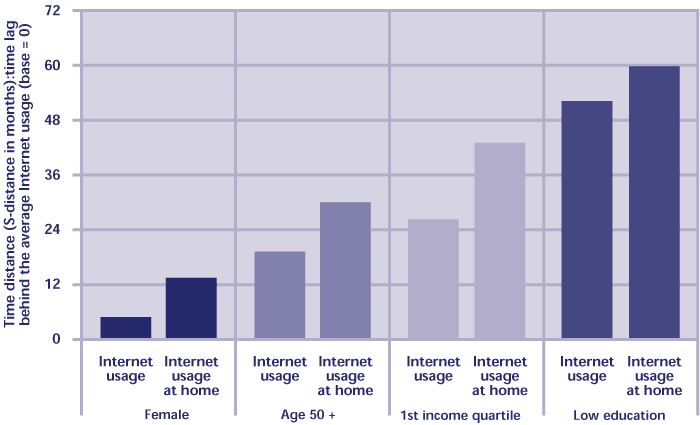
Statistical Indicators
Benchmarking the Information Society
- Statistics & indicators -
Digital divide in EU-15 in time (s-distance): How many months earlier was the level of selected categories in April 2002 attained by average Internet usage

Bases: 1997, 2000: N=15,900, weighted by standard Eurobarometer country and EU-15 weights; 2002: all respondents
Questions: 2002: IN1, IN3, Z19, Z21
Sources: 1997: Eurobarometer 47.0, Jan-Feb 1997; 2000: Eurobarometer 54, Oct-Nov 2000; 2002: SIBIS GPS 2002
The magnitude of digital divides
can also be expressed in terms of time lags, i.e. in terms of the time
delay for particular sub-groups to achieve the same level of Internet
usage as the population on average.
Such time distances (s-distances)
were calculated between the April 2002 levels of Internet usage for the
selected socio-economic and demographic groups and the (earlier) time when
corresponding levels had been achieved by the population overall. The smallest
time lag was that for gender, followed by age (50+), income (lowest quartile)
and low education (early school-leavers) . The gender time lag for Internet
usage overall is only about 5 months, meaning that the population overall
reached the April 2002 levels of usage by women five months earlier, whilst
for the low education group it was more than 4 years. Time distances can
also be used to compare penetration rates for different indicators and
different categories. For example, the time lag for “total Internet
usage at home” behind “total Internet usage” was generally
about 8 months although for some groups it was slightly longer.